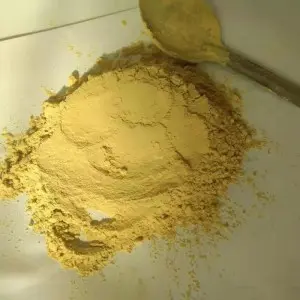Jul . 27, 2024 08:48 Back to list
Understanding the Roles and Importance of Cross Pollination in Plant Reproduction and Biodiversity
The Importance of Cross-Pollination in Agriculture
Cross-pollination is an essential biological process that significantly influences agricultural production. This process involves the transfer of pollen from the anthers of one flower to the stigma of another flower, leading to the fertilization of plants and the production of seeds. In agriculture, cross-pollination plays a pivotal role in enhancing crop yield, improving quality, and increasing genetic diversity. Understanding its importance is crucial for farmers and agricultural scientists as they strive to optimize crop production in a rapidly changing environment.
The Importance of Cross-Pollination in Agriculture
Moreover, cross-pollination enhances the quality of fruits and vegetables. The genetic diversity that arises from cross-pollination can lead to improved taste, texture, and nutritional content of produce. For example, cross-pollinated varieties of apples, tomatoes, and peppers may exhibit superior flavor profiles compared to their self-pollinated counterparts. Consumers are increasingly aware of food quality and flavor, driving demand for these premium products. As a result, farmers who utilize cross-pollination techniques often find themselves at an advantage in the marketplace.
function of cross pollination pricelist

In addition to yield and quality, cross-pollination contributes to the maintenance of genetic diversity within crop species. Genetic diversity is vital for the adaptability of crops to changing climatic conditions and emerging pests and diseases. A diverse gene pool means that some plants will possess traits that allow them to survive and thrive even when faced with challenges that threaten uniform varieties. This diversity not only ensures food security but also provides a safeguard against the loss of crop species that might otherwise occur due to environmental stressors.
Farmers have various techniques at their disposal to promote cross-pollination. One common method involves planting multiple varieties of a crop in close proximity, allowing for pollen transfer between plants. Additionally, employing different breeding techniques, such as controlled pollination, enables farmers to select and breed the best-performing plants systematically. This targeted approach to cross-pollination can result in the development of new varieties that are better suited to specific environments and market demands.
However, it is important to acknowledge the challenges that come along with cross-pollination. The reliance on specific pollinators, such as bees and other insects, can be problematic, especially with the declining populations of these crucial species. Farmers must prioritize the health of pollinator populations by creating conducive environments for them to thrive. This includes planting wildflowers, reducing pesticide use, and fostering overall biodiversity on their farms.
In conclusion, cross-pollination is a fundamental process that significantly impacts agricultural productivity. By improving crop yields, enhancing the quality of produce, and maintaining genetic diversity, cross-pollination provides farmers with the tools they need to meet the demands of a growing population. As the agricultural sector continues to evolve, understanding and implementing effective cross-pollination strategies will be key to ensuring a sustainable and resilient food system. The benefits far outweigh the challenges, making it a vital focus for future agricultural research and practice.
-
Plant Pollen Analysis: Fast & Accurate with GPT-4 Turbo
NewsAug.02,2025
-
KiwiPollen with GPT-4 Turbo: AI Health Supplement Boost
NewsAug.01,2025
-
Pollen Peach Tree AI Management with GPT-4-Turbo
NewsJul.31,2025
-
Eco Fruit Paper Bags for Peak Freshness | Durability Focused
NewsJul.31,2025
-
Pollen Peach Tree for Pure Pollination and High-Quality Peach Pollen
NewsJul.30,2025
-
Premium Cherry Pollen for Pure Pollination & Different Types
NewsJul.30,2025